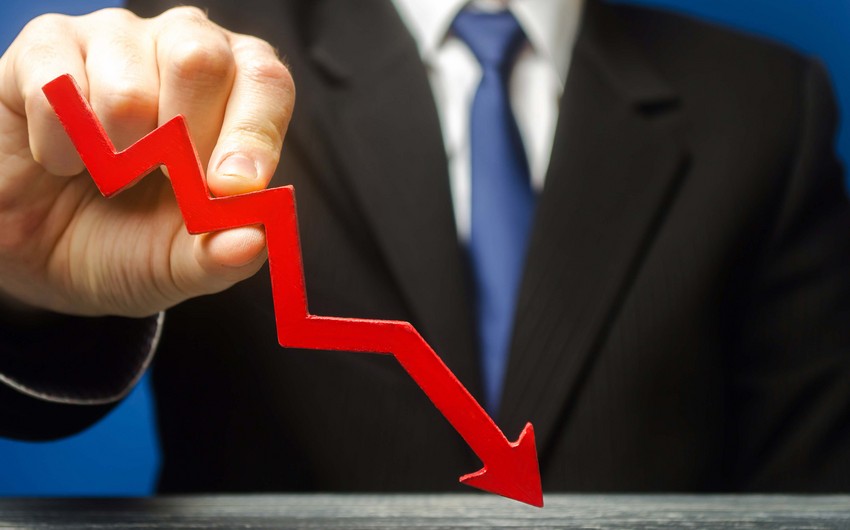In 2020, the Armenian economy was saved by remittances from migrants and the diaspora. Recently, such a statement was made at the Eurasian Development Bank.
First, the coronavirus, and then the defeat in the Second Karabakh War, dealt a crushing blow to the Armenian economy. Armenia is a poor country whose economy suffers from structural problems. Its economy is highly dependent on remittances and investments from Russia and Europe. In 2019, remittances to Armenia amounted to $ 1.5 billion, which is 11.4% of the country's GDP. The travel ban that has been imposed by many countries due to the Covid-19 has had a devastating effect on the Armenian economy.
By the way, over the years, Armenia has somewhat improved the situation with transfers.
For example, in 2004, remittances accounted for almost 20% of the country's GDP. According to the International Organization for Migration, out of the nearly 3 million population, about 261.5 thousand people live off remittances. That is almost 10% of the country's population. 98% of all transfers are spent on everyday consumer needs, including food. At the same time, 9 out of 10 Armenian migrants travel to work in Russia. According to the UN, 30% of the Armenian population are labor migrants. In 2019, Armenia entered the TOP-20 on this indicator in the world. The majority of Armenian migrants work in construction, trade, services, transport (data from the Organization for Economic Cooperation and Development).

In addition to this, Armenia's internal labor market cannot absorb so much labor that remained inside the country due to the pandemic.
Therefore, when in the first quarter of 2020, transfers from Russia to Armenia fell by almost 17%, this immediately affected the economy. By the way, this is precisely why, realizing the painfulness of the situation, the day before, Prime Minister Nikol Pashinyan at a meeting of the Supreme Eurasian Economic Council asked to lift restrictions on the entry of Armenian citizens into the EAEU countries.
Moreover, a particularly vicious circle is observed: the basis of Armenia's economic activity is the sphere of trade and services, industry, imports, and private money transfers. Armenian migrants send money home to their relatives and friends. They spend this money on imported products, fruits, vegetables, etc. As a result, remittances lead to an increase in imports and the volume of goods and services.
Therefore, on paper, economic activity is growing, but it is just an illusion of economic development in reality.
Representatives of the diaspora are pouring substantial money into Armenia. To increase their country's investments, Nikol Pashinyan's government decided in 2018 to issue diaspora bonds. There is a similar way of investing, for example, in Nigeria and Ethiopia. The diaspora representatives, tired of supporting their homeland, were offered not to send money to funds and charity but to invest. In other words, they found a new way to extract money from them.

Armenia was saved from complete collapse by the summer easing of quarantine measures in various countries, including Russia. The migrants who remained in the Russian Federation were able to return to work at construction sites, cafes, and other places. It allowed them to accumulate certain funds, which were sent to their countries in the third quarter. Thanks to this, in the third quarter of 2020, remittances from Russia to the CIS countries reached a two-year maximum.
The war with Azerbaijan played an additional role. Money was sent not only to support their families at home but also to those who were left without work or home.
Gini index, or Gini coefficient, is a measure of the distribution of income across a population. It is often used to gauge , measuring income distribution or, less commonly, wealth distribution among a population. The coefficient ranges from 0 (or 0%) to 1 (or 100%), with 0 representing perfect equality and 1 representing perfect inequality. Values over 1 are theoretically possible due to negative income or wealth.
At the end of 2018 (there are no more recent data yet) in Armenia, the Gini index was 34.4%. Since the mid-2000s, this indicator has only been growing in Armenia.
In Armenia, unlike other countries in the region, a serious gap is already observed between the poor and the middle class. In other countries, large gaps tend to be between the poor and the rich.
According to one World Bank study, even good education and considerable effort do not contribute to the well-being of Armenia's population because the poor and the rich have unequal access to markets. The economic situation in Armenia, as mentioned above, is deplorable. In the third quarter, the country's GDP contracted by 9.1%. The Eurasian Development Bank expects this year to reduce the Armenian economy by 6.4%, while the IMF expects a 7% decline. The Armenian government is less optimistic - they expect a 7.9% reduction.
It is difficult to say what awaits the country's economy in the future. A civil war is brewing in Armenia, and if it cannot be avoided, the economic situation will worsen. And it will take more than one year to return to pre-crisis indicators.
Azad Hasanli, financial analyst


 https://static.report.az/photo/52516e06-196a-39e8-bfd1-797c13813228.jpg
https://static.report.az/photo/52516e06-196a-39e8-bfd1-797c13813228.jpg

